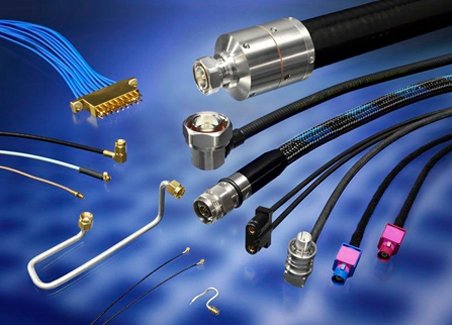Introduction to All-in-One PC PCB Innovation
The all-in-one (AIO) PC market has grown rapidly, fueled by demand for sleek, powerful, and space-saving devices. At the heart of these machines lies the printed circuit board (PCB), which integrates critical components like processors, memory, storage, and connectivity modules. Unlike traditional desktops, AIO PCs must balance compactness with high performance, making PCB design a core factor in delivering next-gen computing experiences.
Modern PCB engineering isn’t just about connecting circuits—it’s about optimizing energy efficiency, ensuring thermal stability, and maintaining signal integrity in a constrained form factor. This article explores the strategies, materials, and innovations shaping sleek PCB designs for all-in-one PCs.
Why Sleek PCB Design Matters in Compact Systems
The demand for sleek, space-efficient, and powerful computing solutions has made all-in-one (AIO) PCs one of the most attractive categories in the tech industry. Unlike traditional desktops, which have the luxury of large chassis and multiple dedicated PCBs, AIO systems must condense every essential function into a compact board design.
Space Optimization in PCB Layouts
In AIO PCs, every millimeter matters. Engineers face the constant challenge of balancing functionality with available space. This involves:
- Layered PCB designs to accommodate multiple functionalities without expanding the footprint.
- Component placement strategies that reduce redundant wiring and optimize airflow.
- Smaller interconnects and vias that support dense routing while minimizing electrical noise.
By leveraging multilayer PCB technologies, designers can embed power distribution planes, high-speed signal paths, and ground layers within a compact space.
Enhancing User Experience with Slim Profiles
End users demand thin and lightweight designs without compromising performance. Sleek PCB layouts directly influence how slim an AIO PC can be manufactured. A thinner system not only looks more modern but also:
- Improves portability for hybrid work and education environments.
- Provides ergonomic benefits, requiring less desk space.
- Enhances aesthetics, appealing to premium buyers and professionals.
Ultimately, sleek PCB engineering isn’t just a technical necessity—it’s a core driver of market appeal.
Core Principles of All-in-One PC PCB Engineering
The foundation of a successful AIO PCB lies in the engineering principles that define reliability and performance. Designers must carefully balance power, signal integrity, and thermal performance to ensure smooth operation.
Power Distribution and Energy Efficiency
Efficient power management is critical. With multiple high-demand components running simultaneously, PCBs must:
- Integrate dedicated power planes for stable voltage supply.
- Use low-dropout regulators (LDOs) and advanced DC-DC converters.
- Optimize current return paths to reduce power loss.
This ensures components such as CPUs and GPUs receive consistent power delivery without voltage fluctuations.
Signal Integrity and High-Speed Data Flow
Modern AIO PCs rely heavily on high-speed buses like PCIe, DDR memory, and USB-C. To maintain signal integrity, PCBs employ:
- Controlled impedance traces to prevent reflection and data loss.
- Differential pair routing for high-speed signals.
- Ground shielding techniques to reduce electromagnetic interference (EMI).
Thermal Management and Heat Dissipation
Heat buildup is one of the biggest challenges in compact PCBs. Without proper thermal management, performance suffers. Solutions include:
- Copper pours and thermal vias for better heat conduction.
- Integrated heat spreaders and thin vapor chambers.
- Strategic component placement to avoid thermal hotspots.
By embedding thermal solutions directly within PCB design, manufacturers can minimize reliance on bulky external cooling systems.
Advanced Materials Used in Modern PCBs
Material science plays a critical role in enabling sleek PCB designs. Traditional FR4 substrates are no longer sufficient for high-speed, high-density AIO PCs.
Multilayer PCB Technologies
Modern AIO boards often feature 10–20 layers, allowing designers to separate power, signal, and ground planes while maintaining compactness. These multilayer boards support:
- High-speed interconnects.
- Improved EMI shielding.
- Greater circuit density.
Flexible and Rigid-Flex PCBs
To achieve ultra-thin designs, engineers increasingly use rigid-flex PCBs, combining traditional rigid sections with flexible connectors. Benefits include:
- Reduced need for bulky connectors.
- Improved durability due to fewer solder joints.
- Greater design freedom for unique form factors.
Eco-Friendly and Lead-Free Materials
With rising environmental concerns, manufacturers are adopting halogen-free laminates, lead-free soldering, and recyclable substrates. Beyond compliance with regulations like RoHS and WEEE, this shift also improves brand reputation among eco-conscious consumers.
Design Challenges in All-in-One PC PCB Development
Creating PCBs for all-in-one PCs is a balancing act between performance, reliability, and compactness. While innovation has made sleeker designs possible, engineers face multiple technical obstacles that require smart solutions.
Balancing Compactness with Performance
The most pressing challenge is fitting desktop-class performance into a thin enclosure. Unlike desktops, AIO PCs don’t have room for:
- Oversized cooling fans
- Multiple expansion cards
- Extra-large power supplies
This means PCB engineers must:
- Use denser routing strategies without causing crosstalk.
- Integrate onboard power regulators instead of relying on external modules.
- Rely on multifunctional chips that handle several tasks simultaneously.
This balance ensures that users enjoy powerful performance while still benefiting from a slim form factor.
Minimizing Electromagnetic Interference (EMI)
With so many high-speed components placed close together, EMI becomes a significant problem. Poorly managed EMI can cause:
- Random system crashes
- Data transmission errors
- Degraded Wi-Fi and Bluetooth signals
To counter this, engineers implement:
- Ground planes and shielding layers within multilayer PCBs.
- Differential signal routing to reduce electromagnetic coupling.
- Filtering circuits at entry/exit points of signals.
Durability and Long-Term Reliability
All-in-one PCs are expected to last for years under heavy use. Reliability challenges include:
- Thermal stress from compact enclosures.
- Mechanical stress from repeated handling.
- Aging of solder joints due to constant heating and cooling.
To enhance durability, designers use high-Tg laminates (glass transition temperature materials), advanced underfill techniques for solder reinforcement, and thermal cycling tests during quality assurance.
Integration of Key Components on PCB
Unlike desktops, which distribute tasks across multiple boards, AIO PCs integrate almost everything on a single or minimal set of PCBs. This requires precision engineering for optimal placement.
CPU and GPU Placement Strategies
The CPU and GPU are the heart of performance. Engineers must ensure:
- Placement near dedicated heat dissipation areas.
- Shortest possible trace lengths for memory and power delivery.
- Use of thermal interface materials (TIMs) for efficient cooling.
Memory and Storage Integration
Memory and storage require high-speed, stable connections. Integration strategies include:
- Soldered DRAM modules for compactness.
- M.2 NVMe slots placed close to CPU lanes.
- Embedded eMMC or soldered SSD chips in ultra-thin models.
Connectivity Modules: WiFi, Bluetooth, and Ethernet
Connectivity is critical for modern users. Engineers integrate modules directly onto PCBs using:
- Onboard WiFi/Bluetooth chipsets with dedicated antennas.
- Ethernet PHY integration with minimal trace lengths.
- Shielded sections to prevent wireless interference.
By handling connectivity at the PCB level, manufacturers reduce the need for bulky external cards or dongles.
Manufacturing Innovations for All-in-One PC PCBs
Manufacturing sleek PCBs for AIO systems requires state-of-the-art production methods that go beyond traditional assembly lines.
Automation in PCB Assembly
Modern factories use robotic pick-and-place machines capable of positioning thousands of components per hour with microscopic precision. Benefits include:
- Faster turnaround times.
- Reduced human error.
- Enhanced consistency across production batches.
Quality Control and Testing Methods
Since AIO PCBs handle multiple critical functions, testing is essential. Methods include:
- Automated Optical Inspection (AOI) to detect soldering errors.
- In-Circuit Testing (ICT) for verifying electrical performance.
- Thermal imaging analysis to identify hotspots.
These innovations ensure that each PCB delivers long-term stability and performance before leaving the factory.
Role of AI and Simulation Tools in PCB Design
In recent years, artificial intelligence (AI) and simulation technologies have revolutionized PCB design for all-in-one PCs. As systems become more compact, manual trial-and-error methods are no longer sufficient.
AI-powered platforms now assist engineers in:
- Automated routing optimization: AI algorithms identify the shortest, most efficient trace paths while avoiding EMI issues.
- Thermal simulation: Predicting hot spots before physical prototypes are built.
- Signal integrity analysis: Ensuring stable high-speed communication across buses like PCIe and DDR memory.
- Failure prediction: Using historical data to forecast potential weaknesses in solder joints or laminates.
Simulation tools such as ANSYS, Cadence, and Altium Designer allow engineers to model entire PCB environments virtually. This not only reduces costs but also accelerates time-to-market by minimizing prototype iterations.
By combining AI with simulation, PCB designers create smarter, more reliable boards that meet the demands of slim yet powerful AIO PCs.
Cost-Effective Approaches Without Sacrificing Quality
Designing sleek PCBs for AIO PCs can quickly become expensive due to the complexity of multilayer boards, premium laminates, and advanced manufacturing methods. However, cost can be controlled with the right strategies.
Strategies for Cost Reduction
- Component standardization: Using widely available parts helps reduce procurement costs.
- Batch manufacturing: Producing PCBs in large volumes lowers per-unit costs.
- Hybrid PCB designs: Combining rigid and flexible sections strategically instead of relying entirely on rigid-flex boards.
- Optimized testing: Leveraging AI-driven defect detection reduces wastage.
Balancing Quality and Affordability
While cost-saving is important, compromising on material quality or testing can lead to reliability issues. AIO PCs, designed to last years, must use:
- High-Tg laminates that withstand thermal stress.
- Gold plating or ENIG finishes for long-term durability.
- Lead-free soldering to meet environmental standards.
The best manufacturers strike a balance between cost efficiency and uncompromising quality, ensuring users receive powerful devices at competitive prices.
Future Trends in All-in-One PC PCB Design
As computing evolves, so too does the future of PCB design. AIO PCs will benefit from several key advancements in the coming years.
Miniaturization and Nano-PCBs
With progress in nano-fabrication, PCB traces will shrink further, allowing more components to fit in smaller areas. This trend enables:
- Ultra-slim PC designs.
- Higher performance per square centimeter.
- Reduced energy consumption.
AI-Driven Adaptive PCBs
Future PCBs may integrate embedded AI chips that adjust performance and power dynamically. Such boards could:
- Self-heal from minor circuit faults.
- Reroute power for efficiency.
- Optimize thermal output in real-time.
Sustainable and Recyclable PCB Technologies
Eco-conscious design is becoming essential. Next-gen PCBs will:
- Use biodegradable substrates instead of petroleum-based materials.
- Employ recyclable copper and metals.
- Minimize toxic waste during production.
These trends not only enhance performance but also align with global sustainability initiatives.
Case Study: Successful Sleek PCB Implementation
A leading electronics manufacturer recently developed an ultra-thin AIO PC targeted at business professionals. The PCB design process included:
- 12-layer rigid-flex PCB combining CPU, GPU, and storage integration.
- Advanced heat dissipation channels embedded within copper planes.
- Onboard WiFi 6E and Bluetooth 5.3 modules to reduce external dongles.
- Automated AI-based routing for high-speed signal optimization.
The result? A PC that was 25% slimmer than its predecessor while delivering 30% higher performance. This case demonstrates how modern PCB engineering makes compact, powerful AIO systems a reality.
FAQs on All-in-One PC PCB Design
1. Why is PCB design so critical for all-in-one PCs?
In all-in-one PCs, the PCB acts as the central hub for every function — from processing power to connectivity. Unlike desktops that distribute load across multiple boards, AIO PCs rely heavily on a single or minimal PCB setup. A poorly designed PCB could lead to overheating, unstable power delivery, or reduced system lifespan, making PCB design one of the most critical elements in these devices.
2. How do multilayer PCBs improve AIO PC performance?
Multilayer PCBs allow designers to stack multiple layers of copper and insulating material, enabling:
- Compact integration of complex circuits.
- Better EMI shielding.
- Improved power distribution and signal integrity.
This results in faster performance without increasing the physical footprint, which is essential for sleek AIO systems.
3. What role does thermal management play in slim PCBs?
Thermal management is crucial because slim devices don’t have room for bulky cooling solutions. Engineers use thermal vias, copper pours, and embedded heat spreaders to dissipate heat efficiently. Without these measures, the system could overheat, leading to throttled performance or component damage.
4. Are eco-friendly PCB materials reliable for high-performance systems?
Yes, eco-friendly materials such as halogen-free laminates and lead-free soldering are designed to meet strict environmental standards without compromising durability. In fact, many premium manufacturers now prioritize RoHS-compliant materials that deliver excellent mechanical strength, thermal stability, and long-term reliability.
5. How do AI and simulation tools reduce PCB development costs?
AI and simulation tools help engineers predict issues before physical prototypes are built. For example:
- AI optimizes routing automatically.
- Simulations detect thermal hotspots or EMI problems early.
This reduces the need for multiple redesigns, cutting both time-to-market and development expenses.
6. What trends will shape the future of AIO PC PCB design?
Future trends include:
- Nano-PCBs that enable ultra-miniaturized computing.
- AI-embedded adaptive PCBs that optimize power and thermal output in real time.
- Sustainable substrates and recyclable materials that align with global green initiatives.
These advancements promise slimmer, faster, and more eco-friendly AIO devices.
Conclusion
The evolution of sleek PCB design for all-in-one PCs represents a blend of engineering precision, material science, and technological innovation. By addressing challenges like compactness, EMI, and thermal management, manufacturers are building systems that are both powerful and stylish.
With the help of multilayer technologies, AI-driven design tools, and eco-friendly materials, the future of AIO PCs looks brighter than ever. Users can expect thinner, more reliable, and environmentally conscious devices without sacrificing the performance they demand.
The journey of PCB design is not just about circuits and connections — it’s about redefining the way we experience computing in compact spaces.





